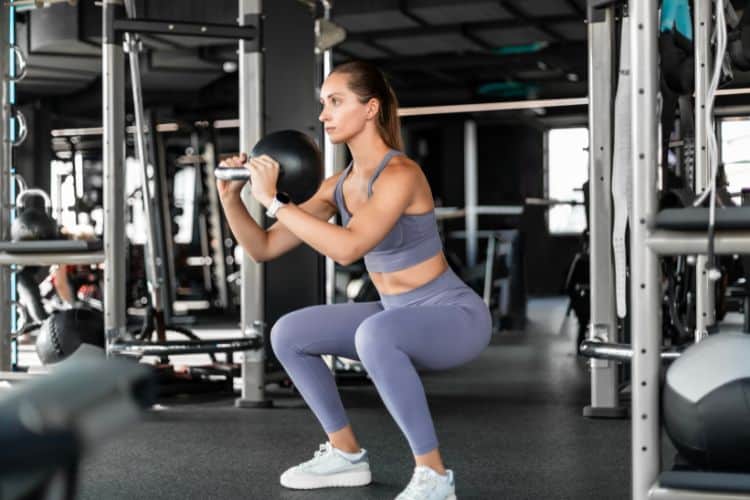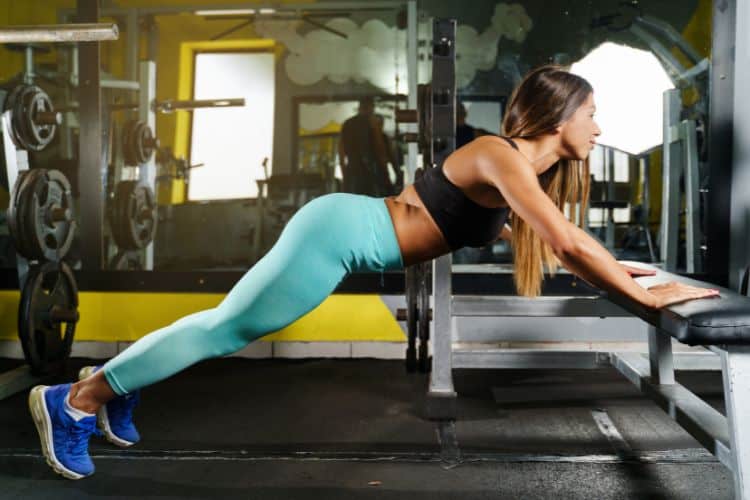Sign up for workout ideas, training advice, reviews of the latest gear and more.






If you’re looking for a simple, effective, and equipment-free way to build strength, burn calories, and improve mobility, a 30-minute full body beginner calisthenics workout routine is one of the best places to start. Calisthenics uses your own body weight to build muscle and improve movement quality, making it ideal for beginners and perfect for at-home training. Whether your goal is weight loss, toning, functional strength, or better endurance, this routine gives you a balanced, total-body workout you can do anytime, anywhere.
In this guide, you’ll learn exactly how calisthenics benefits your body, what exercises to include, how to warm up, how to structure your 30-minute session, and how to progress as you get stronger. No equipment. No gym membership. Just your body—and 30 minutes.
Calisthenics is a style of training that uses your own body weight as resistance. These exercises improve strength, balance, mobility, flexibility, and muscular endurance. Because calisthenics teaches you to master your own body, it’s often considered the foundation of functional fitness.
Common calisthenics movements include squats, lunges, push-ups, planks, glute bridges, dips, leg raises, and more. For beginners, calisthenics is ideal because you can easily adjust difficulty by modifying angles, reps, or tempo.
A structured 30-minute calisthenics routine provides the perfect blend of efficiency, accessibility, and results. Here’s why beginners love it:
No equipment needed—just enough space to move.
Full-body exercises burn more calories and elevate your heart rate.
These movements translate into real-life strength (walking, bending, lifting, climbing stairs).
Full-range movements increase joint mobility and reduce stiffness.
You can easily scale reps, tempo, rest time, or movement variations.
Bodyweight training helps strengthen tendons and joints safely.
You’ll learn how to move better, not just look better.
If you’re brand new to exercising or restarting after a long break, this routine is safe, empowering, and extremely effective.
This workout is split into four phases:
You’ll alternate between upper body, lower body, and core to keep your heart rate high without fatiguing one muscle group too quickly.
Your warm-up prepares your body for movement and improves workout performance. Keep each warm-up exercise controlled and steady.
Perform each movement for 30–45 seconds:
You will complete 4 rounds, each lasting 5 minutes, with 60 seconds of rest between rounds.
Each round includes:
This creates balance, flow, and maximum fat-burning efficiency.
Form tips:
Squats build lower-body strength in your quads, hamstrings, and glutes. For beginners, slow controlled reps are more valuable than fast, shallow squats.
Use a wall, kitchen counter, or sturdy bench.
Why incline?
It reduces load while helping you master the push-up pattern.
Form cues:
Reverse lunges are easier on the knees and better for balance.
Form cues:
If needed, hold onto a wall for balance.
For beginners, you can perform this on your knees while maintaining a straight spine.
Form cues:
A beginner-friendly cardio movement to elevate your heart rate.
Form cues:
This closes each circuit with a light conditioning burst.
After one complete set of the five exercises, rest 60 seconds, then repeat four total rounds.
Once you complete the 20-minute circuit, you’ll finish with a quick, simple, focused core routine.
Perform each movement for 45 seconds, with 15 seconds of rest:
Strengthens deep core stabilizers.
Builds posterior chain strength.
Engages obliques and improves overall core stability.
Even 3 minutes will feel effective when done with slow, controlled movements.
Cooling down helps your heart rate return to normal while improving muscle recovery.
Perform each for 20–30 seconds:
Starting a new fitness routine can feel overwhelming, but these tips will help you stay consistent and confident:
Good technique prevents injury and ensures effective muscle engagement.
There’s zero shame in scaling workouts. In fact, it’s smart.
Examples:
Inhale when lowering, exhale when pushing or standing.
Each week, try one of the following progressions:
Small improvements add up quickly.
Commit to 3–4 sessions per week for best results. Even 30 minutes provides noticeable progress when done regularly.
Here’s a simple schedule to help structure your routine:
This allows your muscles enough time to recover while still maintaining frequency.
This workout is designed with beginners in mind. It balances:
Lower body
Upper body
Core
Conditioning
This structure ensures you build both functional strength and foundational endurance. Each exercise is low impact, joint-friendly, and requires zero equipment. Over time, this routine helps you build muscle tone, improve movement quality, and boost metabolism—all from home.
Once you’re consistently completing the routine, step it up with one of these options:
Increase from 4 circuits to 5.
40 seconds → 45–50 seconds.
Slow down the lowering phase (3–4 seconds).
Once you’ve mastered beginner movements, explore:
Progression keeps your workouts challenging and exciting.
A 30-minute full body beginner calisthenics workout routine is the perfect way to improve strength, mobility, and endurance—without needing any equipment. As a beginner, consistency is more important than intensity. Stick with this routine 3–4 times per week, focus on mastering your movements, and celebrate every improvement.
This workout is effective, empowering, and flexible enough to fit into even the busiest schedule. Whether your goal is fat loss, strength building, or getting more active, calisthenics will help you achieve it while teaching you how to move your body with confidence.
For a well-rounded fitness journey, be sure to pair your 30-minute full-body calisthenics routine with other effective workouts found here at Women’s Fit Club. For example, you might complement your body-weight session with our “30-Minute Beginner Dumbbell Workout: Full Body Tone” to gradually introduce weights; or explore the “45-Minute Full Body Dumbbell Workouts: Build Strength & Burn Fat” for when you’re ready to progress. If you’re focused on the core and lower body, try the “30-Minute Bodyweight HIIT Leg Workout for a Powerful Lower Body” to further boost endurance and tone. For shorter time-frames or active recovery days, the “10-Minute Full Body Dumbbell Workout for a Busy Life” is ideal. Lastly, as mobility and flexibility play an important role in any calisthenics program, check out our “Best Breakfast to Eat After a Workout for Recovery and Energy” for nutrition that supports your movement work and recovery.
Stay up to date on the latest women’s health, fitness and lifestyle trends and tips.